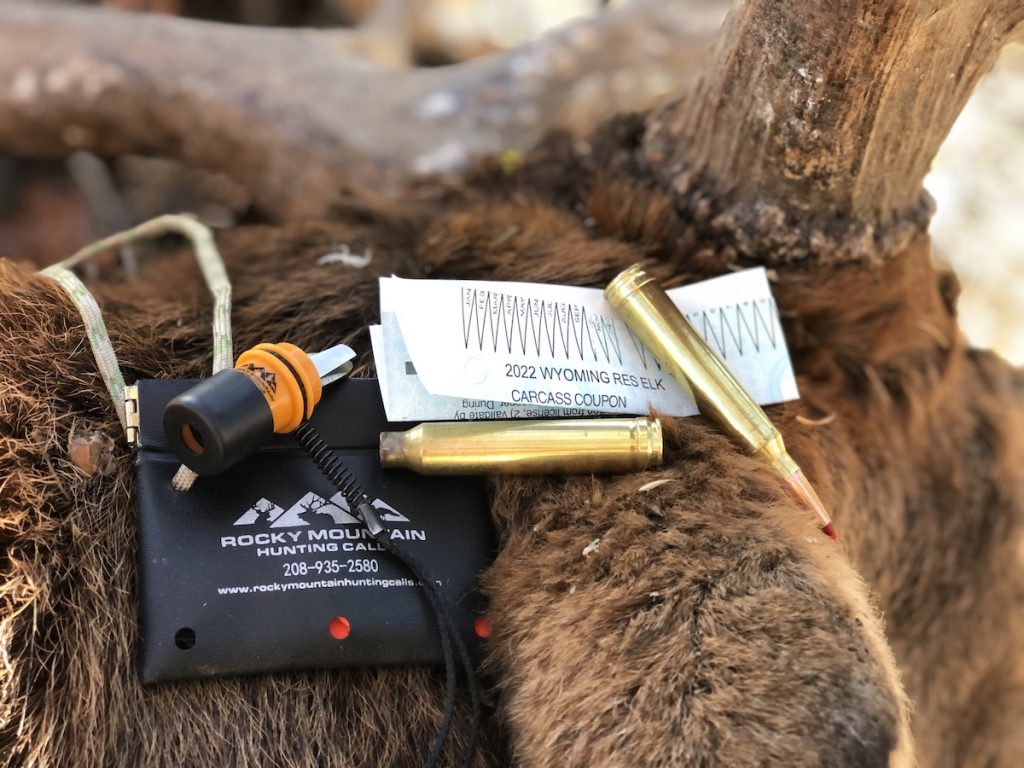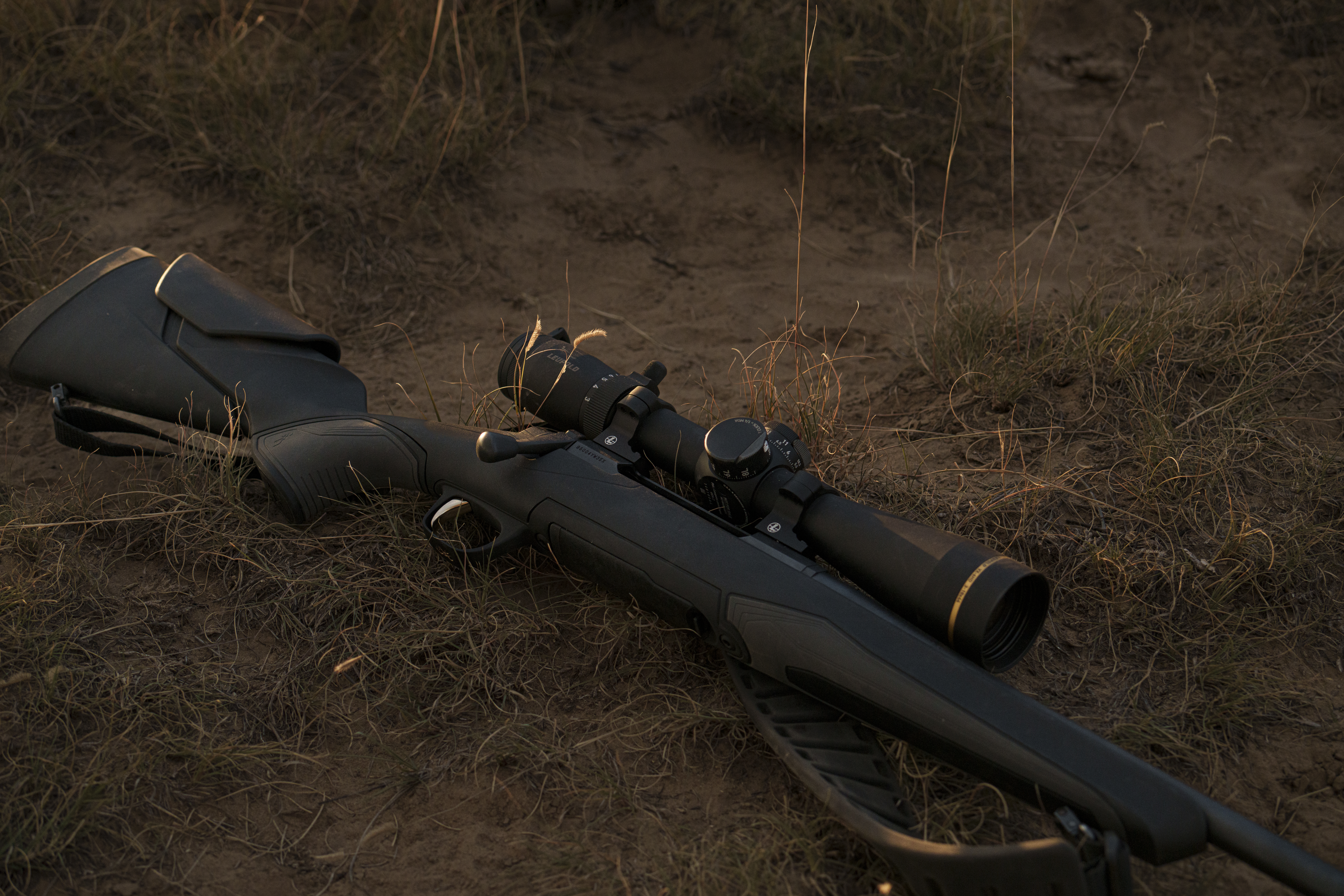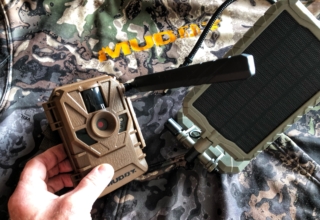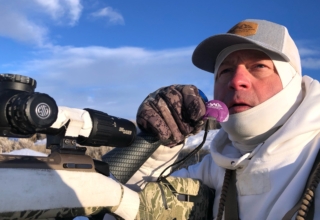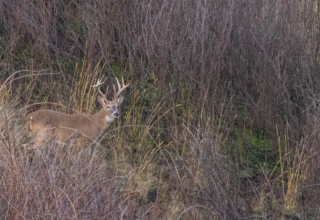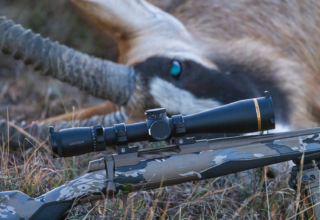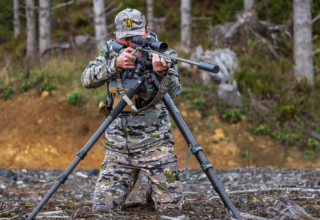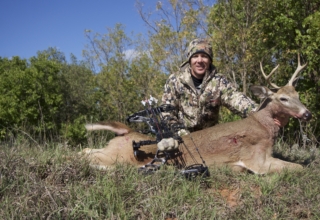Elk are highly social animals. Though they can go church-mouse quiet if hunting pressure gets too intense, they can get very worked up when the conditions are right. Learn how to make elk talk, but also be ready to create natural sounds like sticks snapping, hooves clattering against rocks, etc., and you’ll kill more elk.
by Mark Kayser
The bull was close now but still not revealing itself in the dense stand of lodgepole pines before me. We had exchanged a dozen or more bugles, and I chirped the occasional cow mew to persuade Mr. Rowdy further to show himself.
Despite the heated conversation, the bull’s transmission remained in the park position. Instead of continuing a go-nowhere discussion, I turned away and started walking down the slope in the opposite direction. Before disappearing over a lip, I mewed softly, chuckled, and snapped a branch, then left the standoff site. My goal: make the bull believe the party was happening elsewhere.
Less than five minutes later, I stopped and prodded my hunting partner ahead after a quick downhill jog complete with mews, clattering rocks, and occasional snapping of branches. The bull appeared silently minutes later. His lungs ate an arrow, and that ended the incredible hunt.
The Real Deal
Calling elk can be as exhilarating as front-row seats to the Super Bowl or as mundane as listening to politicians on C-Span justifying taxpayer money waste. In some public areas with high bull-to-cow ratios, calling still rocks, but in high-pressure areas, elk wise up like a raccoon caught previously in a live trap. Regardless of your hunting destination, have an assortment of calling tricks up your sleeve this September.
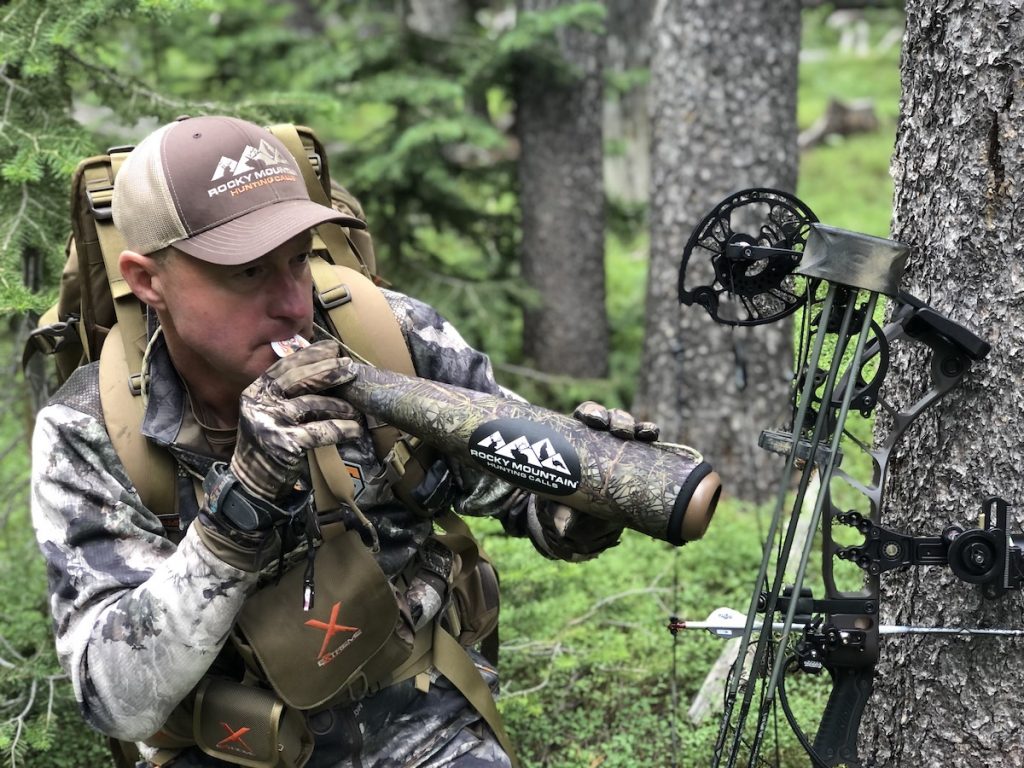
Begin by outfitting yourself with a variety of calls. Some of the best in the business come from Rocky Mountain Hunting Calls, especially with bugles. This company transformed the bugle from an industrial-type tube to a working system that resounds with the same hostility a bull emits while bugling.
How?
Make Boy Talk
The heart of their top bulges, including my two favorites, the Wapiti Whacker and the Little Big Mouth, is the V.E.T.T. calling system (Volume Enhanced Tone Technology). In brief, it is a tuned spring fit into an adapter at the mouth end of the call. When air goes into the bugle, the spring aids in manipulating the right amount of backpressure to help you easily change tones and octave levels.
Precision dimensions throughout the bugle generate deep bugles, higher squeals, chuckles, grunts, and growls, all from one call. I often incorporate the Little Big Mouth into my hunts due to its 9-ounce minimal weight aided by aluminum construction.
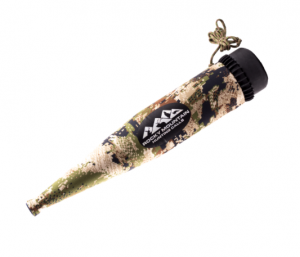
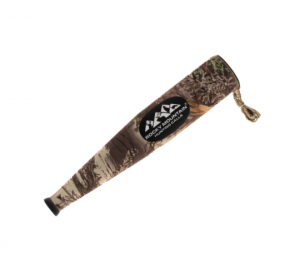
RMHC also helps those with gag issues induced by diaphragm use. The Wapiti Whacker bugle comes in a kit with the SureFire Bugle Adapter and the Black Magic mouth diaphragm. That means you can create realistic elk vocalizations whether you master a diaphragm or prefer a mouthpiece designed for those with gagging reflexes.
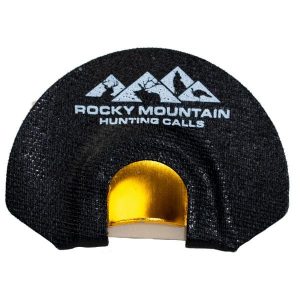
Although you will undoubtedly get carried away, bugling like a madman once you master a call, do not forget that too much calling could cause elk to shirk away from the sounds if they had previous bad experiences. I still use bugles regularly to locate elk, but I often subdue my calling and match the intensity of return calls.
If I feel an elk is suspicious, I may go quiet or work closer, but with more subtle calls. One of those calls is glunking. It is the guttural chuckle of a bull elk. Boy elk often do this in an estrus cow’s presence. Last season, I pulled a satellite bull from more than 200 yards away to nail a 40-yard bow shot simply with one mew and some glunking.
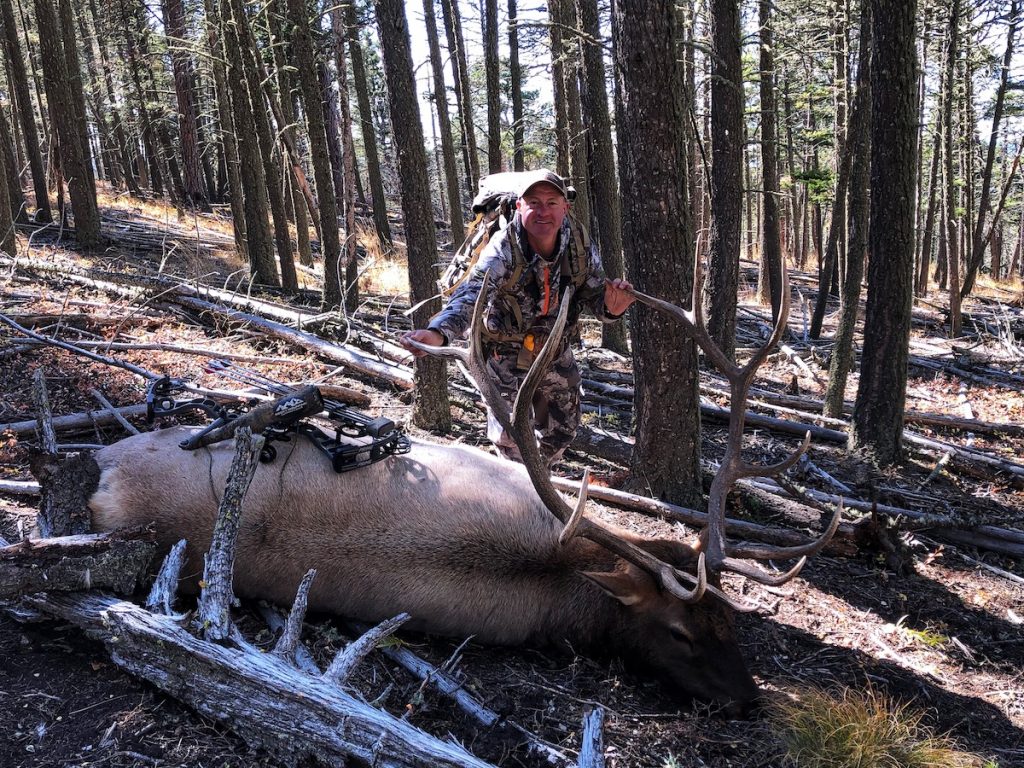
Search YouTube for videos of bulls glunking to get the sound in your head, and then pull out your bugle. Tap on the bell of the call with the flat palm of your hand, and you can mimic that same sound. The V.E.T.T. calling system accentuates the deep sound of a realistic lure bulls instantly recognize as a hookup hint.
Make Girl Talk
Your calling ventures will require a cow call, too. Once again, I turn to RMHC with their Lil Flirt leading the way. This compact, lightweight, and easy-to-use open reed call does it all. With enough practice, you can easily change the tone from mature cow to calf. And at $15, you can buy two or three and stash extras in your pack for the inevitable loss of one in your excitement haste.
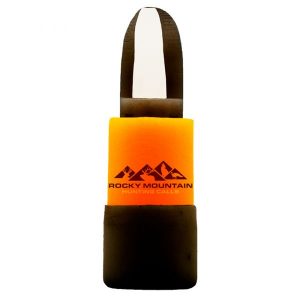
Here is another way to increase realism in your cow calls. Elk are big and throaty, even cows, so project your cow calls through your bugle. This deepens the call, increases the volume, and makes it sound like something talking, weighing 500 pounds or more.
Elk are as quiet as church mice when they want to be, but they can be as unruly as a pack of 8-week-old puppies. It does not hurt to make extra noise, as I did in the opening story.
Natural Noise
When a rutting herd moves, antlers bang against branches, hooves snap fallen limbs, rocks dislodge with a colliding ding against other stones, and you can occasionally hear hooves pounding. If you’re a whitetail hunter, making sounds like this could make you cringe, but for an elk hunter, these are the sounds that can lead to success when added to elk vocalizations or by themselves.
If your calling sounds genuine, additional sounds authenticate the situation and work well when elk get quiet. Cut your conversation as well, but continue to let elk know you’re around with the occasional bump in the woods.
Finally, embrace your inner whitetail hunter and think rattling for elk. You do not have to smash bone, but raking a tree with a large branch to imitate the sound of a frustrated bull sparring with a tree could spur a hung-up bull to shift into gear. After calling for a period with no bull closing the distance, shut up, move a bit, and then begin raking. A suspicious bull may unlock the parking brake and engage in your ruse. If you wish to rattle, carrying a small set of raghorn elk antlers is one way, or consider a rattle box, like the Mini Rattle Cage by RMHC.
Calling elk can be both off-the-charts electrifying and depressingly frustrating. Aid your calling using true-sounding calls. If you can get around elk and sound like elk, you’ll need space in that freezer.
